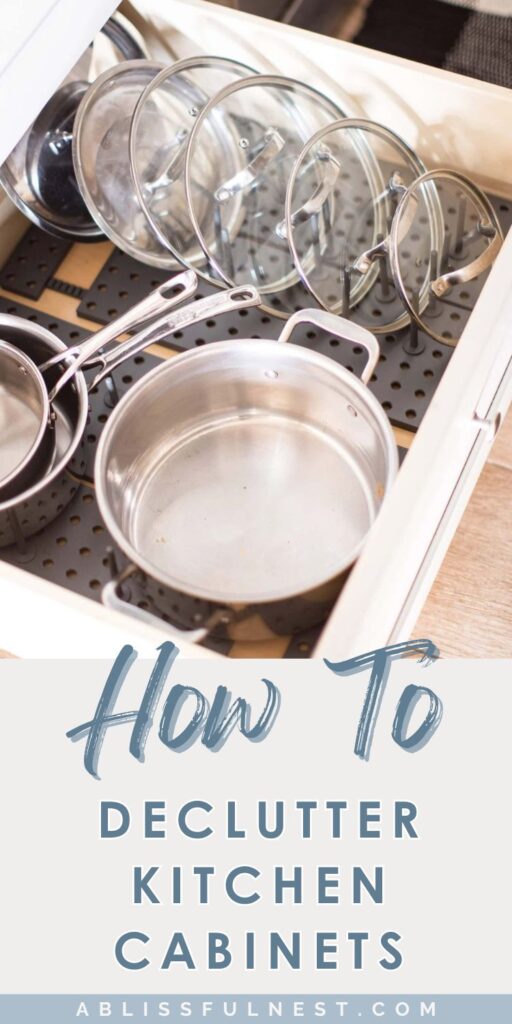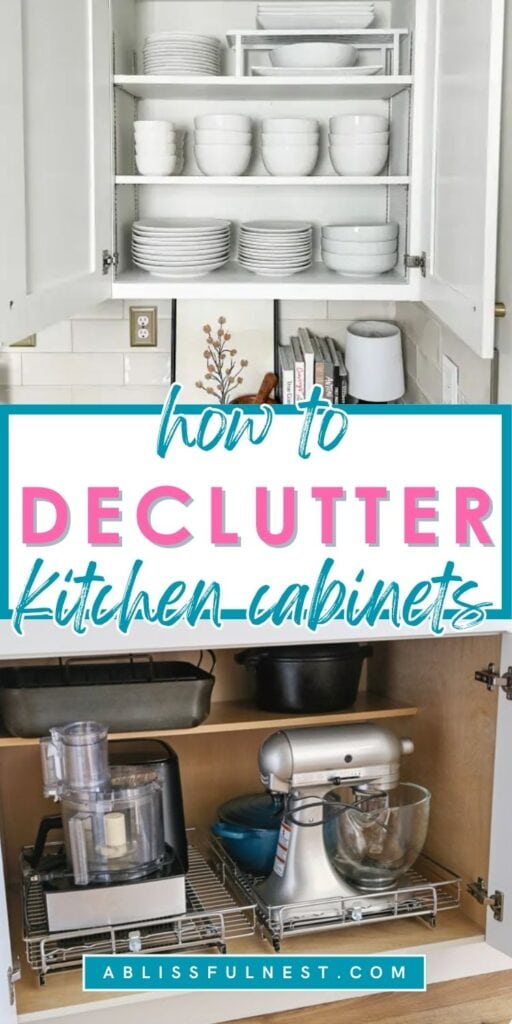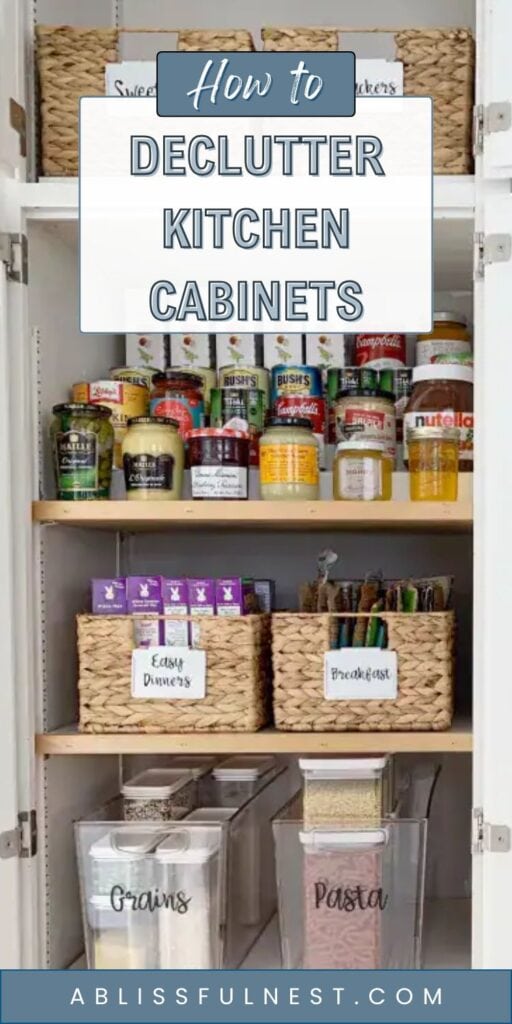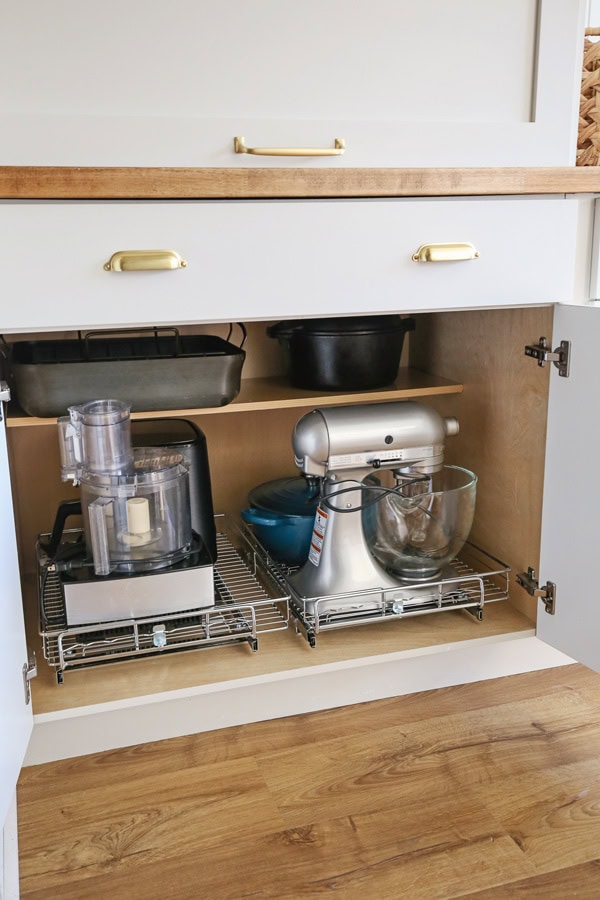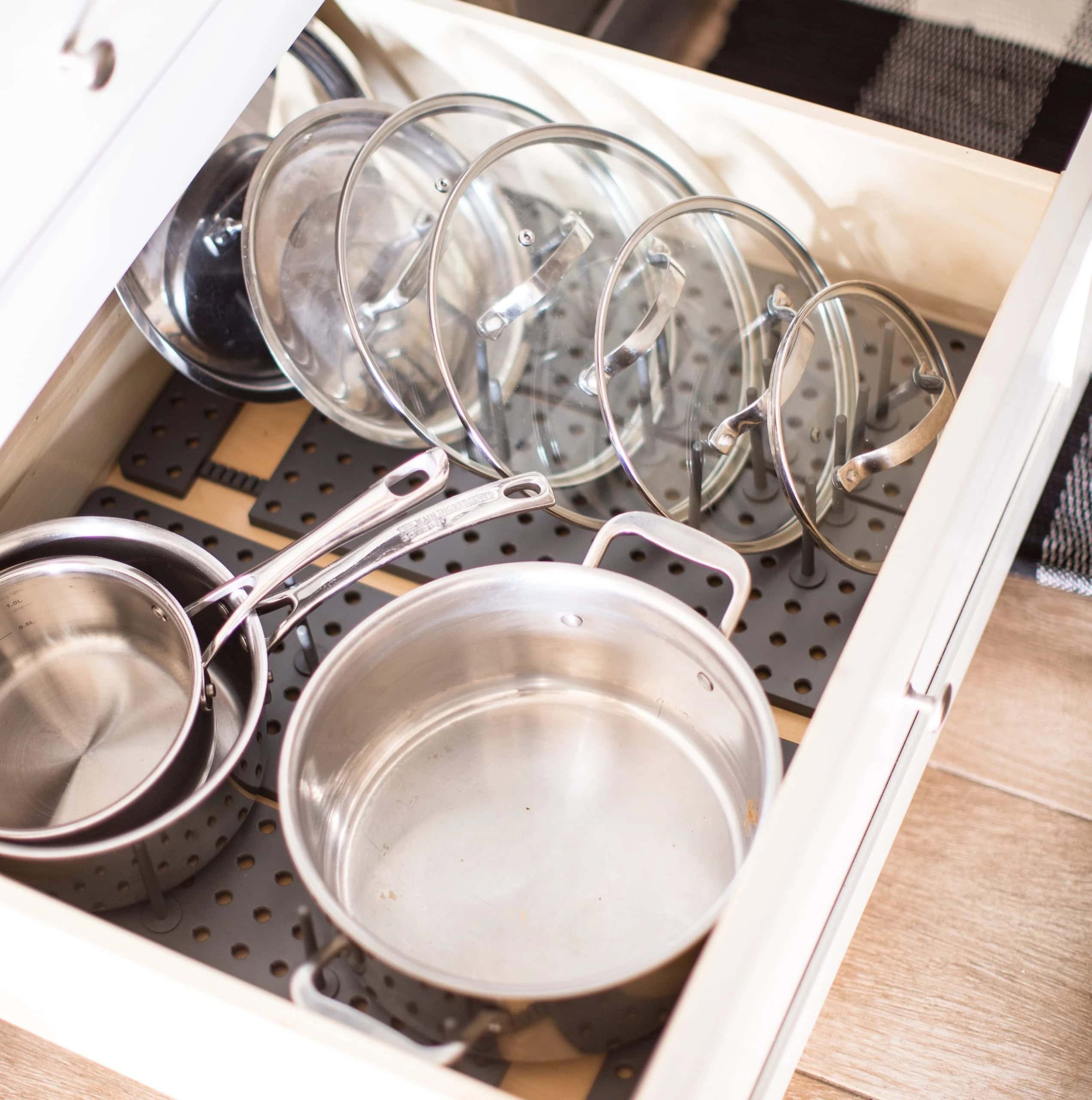Learning how to declutter kitchen cabinets feels overwhelming when you open a door and everything starts falling out, or you can’t find what you need.
Even with all the great decluttering ideas online, it’s hard to know where to begin when your shelves are packed and nothing seems to make sense.
You might find four of the same spatula, mismatched lids, and containers with no bottoms, but still feel unsure about what to toss.
Cabinet clutter builds slowly, and before you know it, your kitchen becomes more stressful than functional during busy mornings or dinner prep.
Trying to cook with overflowing drawers or jumbled storage turns simple tasks into daily frustrations that steal your time and energy.
Sometimes it’s tempting to shut the doors and ignore the mess, but the clutter doesn’t solve itself and only grows with time.
Buying more containers or organizers won’t help if you don’t know what you already have or what’s hiding in the back.
This post may contain affiliate links. As an Amazon Associate and a participant in other affiliate programs, I earn a commission on qualifying purchases at no additional cost to you.
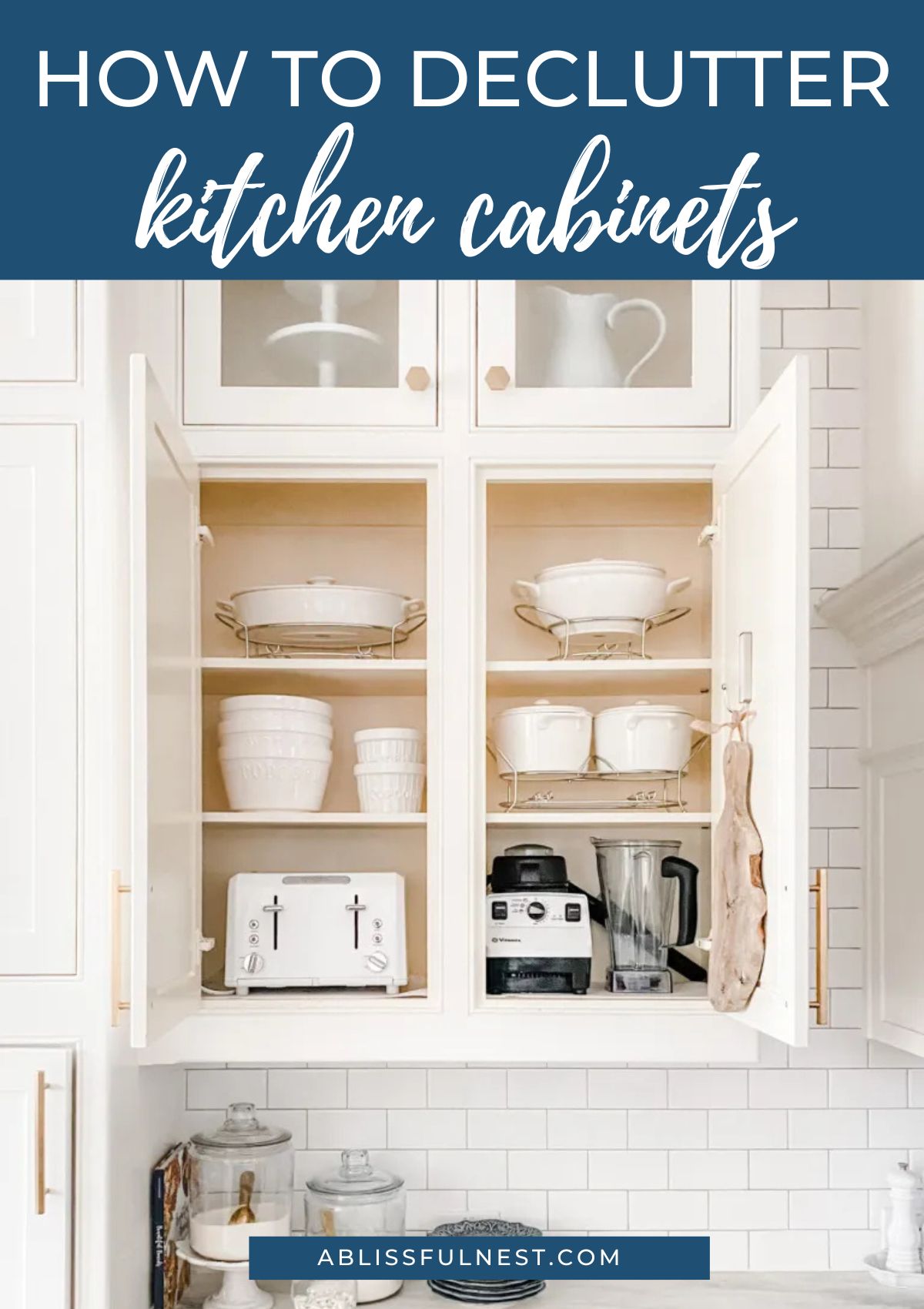
Holding onto things fills your space with unused items that only make it harder to find what you use daily.
The mess affects more than the look of your kitchen. It makes cooking harder and cleanup feel like an even bigger chore.
Once you understand how to simplify, you’ll see that decluttering your cabinets can actually make your whole kitchen easier to enjoy and use.
Why Kitchen Cabinet Clutter Builds Up So Quickly
Kitchen cabinet clutter builds up quickly because most of us buy tools or gadgets with good intentions, thinking they’ll make cooking faster or easier.
After using them once or twice, many of these items get pushed to the back of a cabinet and forgotten for months or even years.
We tend to keep duplicates too, like extra mugs, spatulas, and baking pans, telling ourselves they might come in handy one day.
Over time, these extras add up and fill drawers and shelves that could be used for the things we actually reach for every day.
Another big reason clutter grows is that most kitchens lack clear storage zones, so items end up stuffed wherever they’ll fit, even if it makes no sense.
Instead of grouping by purpose, we often place things where there’s open space, which leads to confusion and overcrowded cabinets.
Many people also hold onto broken or worn-out items with plans to fix them, even if they haven’t used them in years.
Keeping things “just in case” might seem smart, but it takes up space and creates visual clutter that makes your kitchen harder to use.
Cabinet space is limited, so every item you don’t use is taking up room that could go to something you truly need.
When small habits like these stack up over time, it’s easy to feel frustrated by a kitchen that feels messy, crowded, and hard to enjoy.
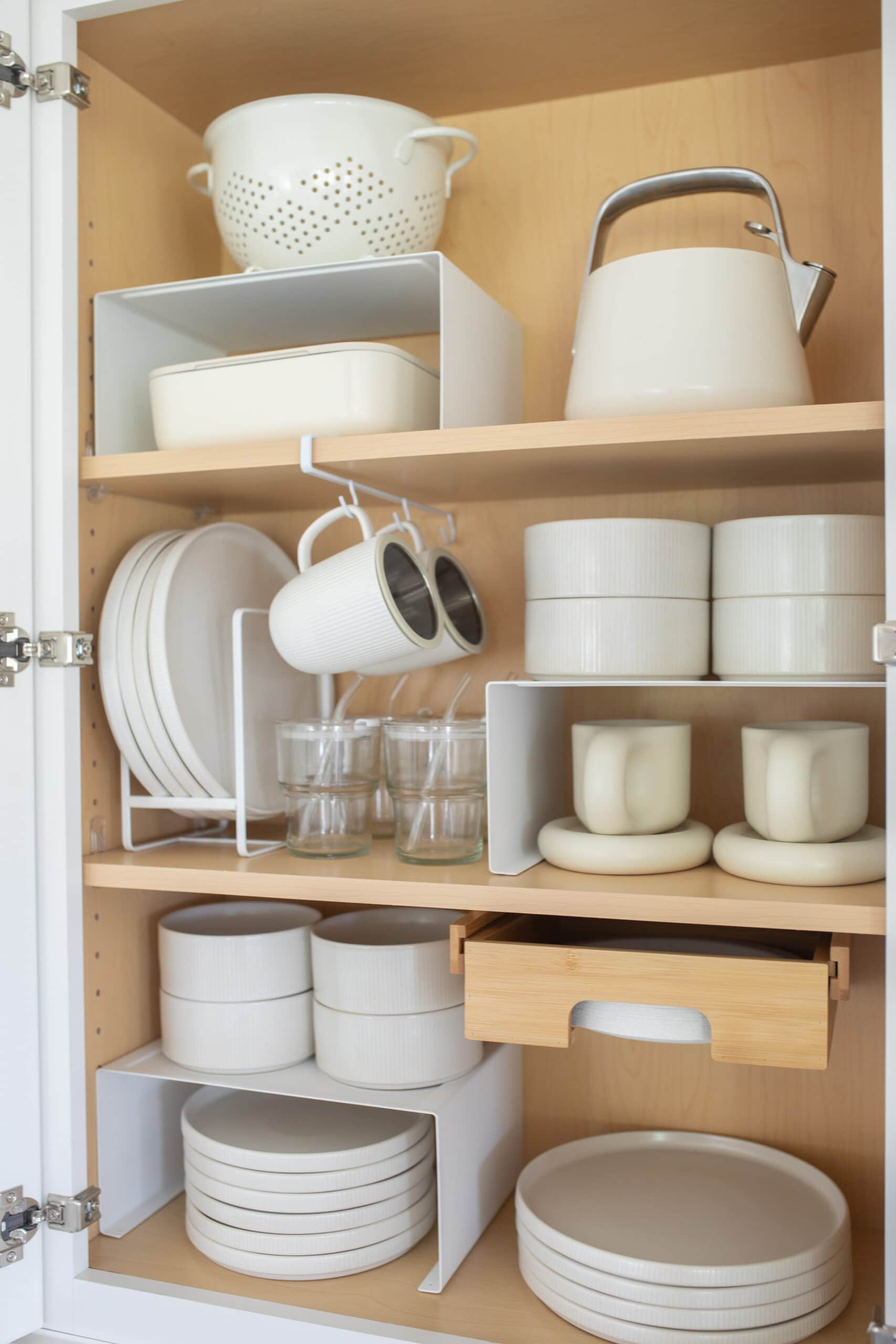
Signs It’s Time to Declutter Your Kitchen Cabinets
It’s easy to overlook kitchen cabinet clutter because it builds up slowly over time. One day everything fits, and the next, you’re digging through piles to find a lid.
If cooking has become more stressful or you’re avoiding certain cabinets altogether, your kitchen might be trying to tell you something.
Pay attention to these common signs to help you start clearing out the excess and creating a space that works better for your daily routine.
- You have gadgets or cookware you forgot you even had.
- Items fall out when you open a cabinet door or drawer.
- You keep buying duplicates because you can’t find what you already own.
- Containers are missing lids or mismatched pieces take up too much space.
- You waste time digging for tools while cooking or cleaning.
- Your shelves feel cramped, messy, or overloaded with rarely used items.
- You feel frustrated or stressed when using your kitchen instead of relaxed and in control.
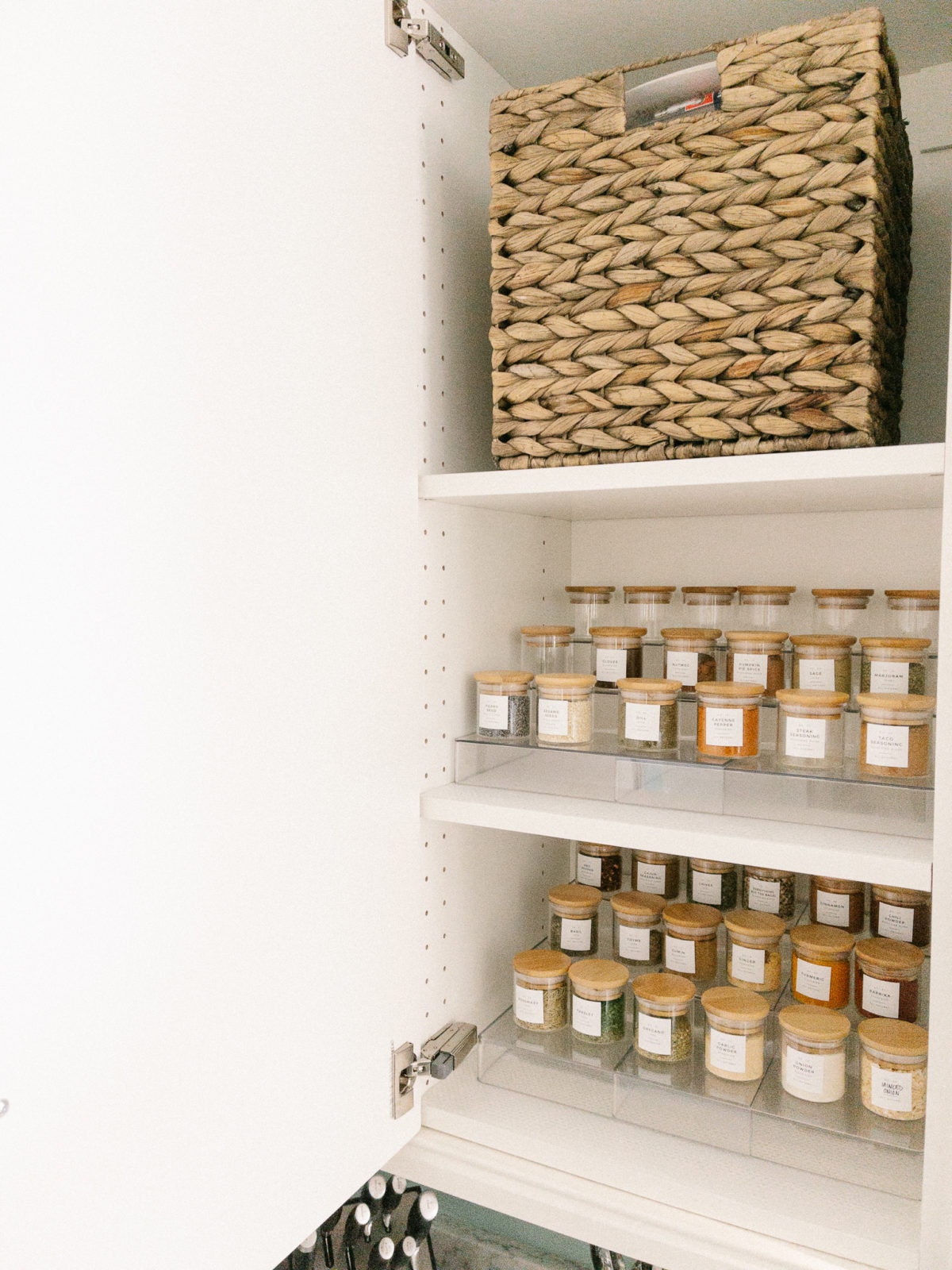
Best Organizing Tools To Help Declutter Kitchen Cabinets
Before you start sorting, gather a few simple tools that will make the process faster and easier without spending a lot of money.
These items help you group things, maximize space, and keep your cabinets neat long after the cleaning is done.
Tap Photos To Shop
Step-by-Step Guide to Decluttering Kitchen Cabinets
Decluttering your kitchen cabinets can feel like a huge task, but breaking it into steps makes it much easier to manage.
Taking your time and focusing on one area at a time helps you stay organized and avoid making a bigger mess along the way.
Step 1: Choose one cabinet to start
Start with a cabinet that feels manageable, like one that holds cups, snacks, or everyday plates. Picking a smaller or frequently used cabinet lets you see fast results without feeling overwhelmed by the entire kitchen. This small win builds your confidence and makes it easier to keep going with the rest of the space.
Step 2: Empty everything out
Remove every item from the cabinet, even the ones in the back or corners. Lay everything out on a clean counter or table so you can see what you’ve actually been storing. This step gives you a clear picture of how much you have and helps prevent shoving things back into the cabinet without thought.
Step 3: Clean the shelves
Wipe down the inside of the cabinet with a damp cloth and gentle cleaner, including corners, shelf edges, and the cabinet door. Look for crumbs, grease, or spills that might have gone unnoticed. A clean, fresh surface sets the tone for a better, more organized setup going forward.
Would you like to save this post?
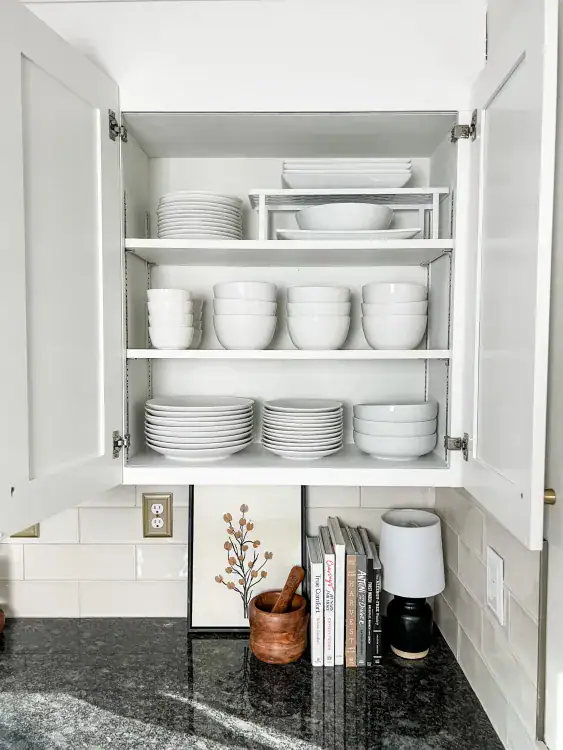
Step 4: Sort items into clear piles
Create four separate piles: one to keep, one to toss, one to donate, and one to relocate if the item belongs in another room. Be honest and practical when making decisions. Let go of broken items, unused gadgets, and things you forgot you even owned.
Step 5: Group similar items together
Put like items in small groups, such as all baking tools, containers with lids, or cooking utensils, so you can clearly see what you have. This helps prevent keeping multiples you don’t need and makes it easier to plan how you’ll organize everything in the cabinet. It also helps you notice if something important is missing.
Step 6: Keep only what’s useful
Focus on keeping the items you actually use on a weekly basis and that still work properly. Let go of anything that’s chipped, missing parts, or simply taking up space. Keeping only useful items makes your cabinets easier to maintain and your daily tasks faster and smoother.
Step 7: Move on to the next cabinet
Once your first cabinet is decluttered and organized, choose the next one and repeat the same steps. This slow and steady approach keeps the process manageable without turning your entire kitchen upside down. Over time, you’ll see your space become more functional and less stressful to use.
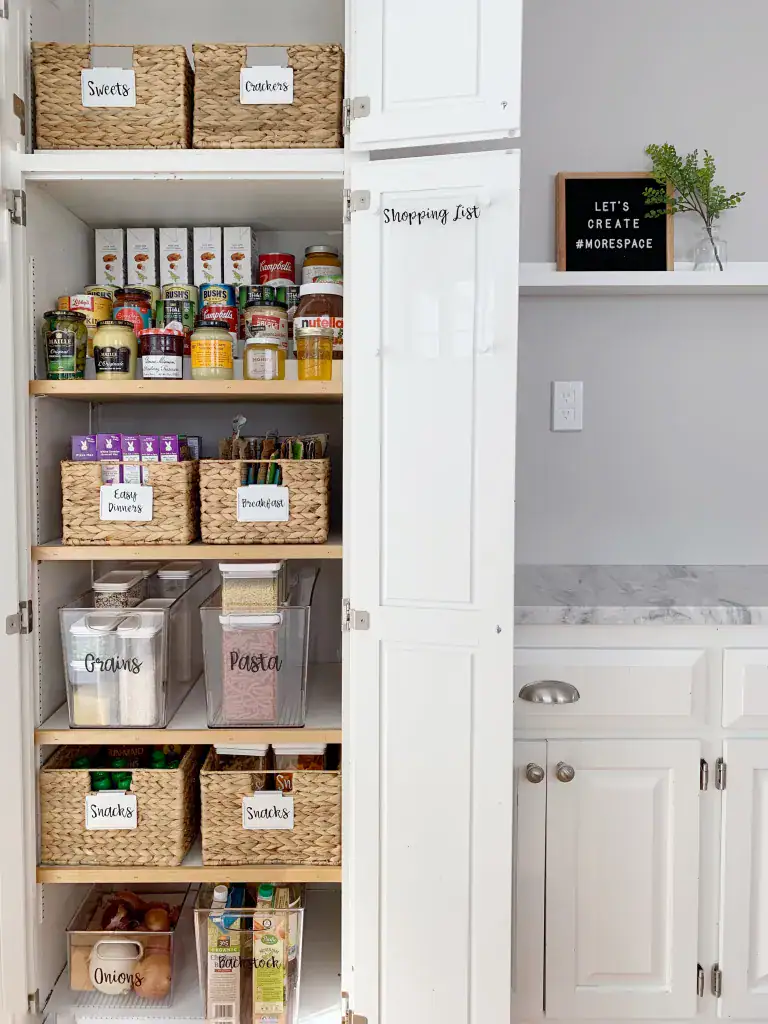
What to Get Rid of When Decluttering Kitchen Cabinets
Knowing what to keep and what to toss can feel tricky, but letting go of unused or broken items frees up valuable space fast.
Start with the easy stuff like broken tools, chipped dishes, and plastic containers missing lids that never seem to match anything.
Get rid of duplicates you don’t need, like extra peelers, spatulas, or measuring cups that pile up and make drawers feel cluttered.
Take a look at old cookware that’s been replaced but still sits in the cabinet out of habit. If it’s scratched, rusted, or barely used, let it go.
Be honest about those kitchen gadgets you thought would change your cooking routine but have only been used once or twice.
Small appliances that no longer work or don’t fit your current needs should also be donated, recycled, or thrown away.
Check for expired pantry items, seasoning packets, or half-used boxes hiding in the back that haven’t been touched in months.
Toss out any specialty tools you bought for one recipe but haven’t used since unless you know you’ll need them again soon.
Remove anything that doesn’t fit how you cook now or adds stress by being hard to reach or always in the way.
Letting go of clutter helps your kitchen feel cleaner, more organized, and better suited for the way you actually live and cook today.
How to Organize Kitchen Cabinets After Decluttering
Once your items are sorted and decluttered, the next step is to group similar things together so every category has a clear and logical home.
Place baking tools, food storage containers, dishes, and snacks in their own separate zones to keep everything easy to find and return.
Keep daily-use items like plates, bowls, mugs, and cooking utensils at eye level or in the most accessible lower cabinets for quick grab-and-go convenience.
Use lazy Susans in deep corner cabinets to keep smaller items like oils, spices, or condiments easy to reach without having to dig.
Install pull-out organizers or baskets in lower cabinets to prevent items from getting lost in the back or piling up in hard-to-reach places.
Store appliances you only use occasionally, such as holiday roasters or ice cream makers, in the highest cabinets or hardest-to-reach shelves.
Think about how you move in your kitchen and set things up so your tools match your cooking flow from prep to cleanup.
Label bins, baskets, or shelf edges to help everyone in the household know where items belong and to keep the system in place long term.
Avoid overcrowding any single shelf, which can make things fall or feel messy even after you’ve decluttered.
A good cabinet setup should make cooking and cleaning easier, save you time, and bring a sense of calm and order to your space.
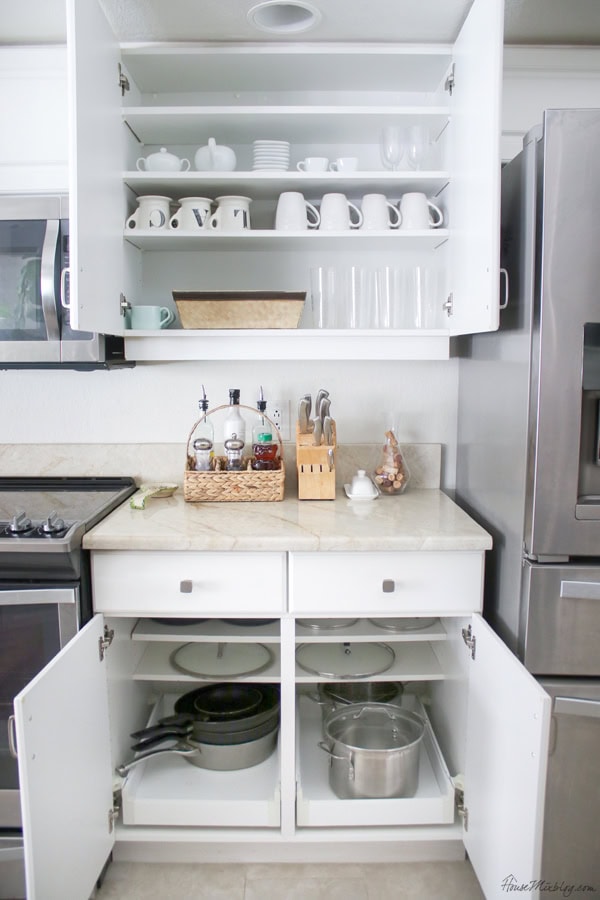
Frequently Asked Questions
It’s a good idea to go through your kitchen cabinets every three to six months to keep clutter from creeping back in. Regular check-ins help you catch expired food, unused tools, or messy drawers before things get out of control again.
Start by focusing on one cabinet at a time to keep things manageable and avoid making a bigger mess. Empty the cabinet, clean the shelves, sort items by use, and only put back what you truly need and use often.
Donate gently used items like mugs, dishes, or small appliances to local shelters, food banks, or donation centers in your area. Throw away anything that’s expired, broken, missing parts, or not safe for reuse to keep clutter from just moving elsewhere.
Use clear bins, shelf risers, and dividers so everything has a proper place and is easy to access. Set a reminder to do a quick reset every few months to make sure your system still works and nothing is piling up again.
Use your vertical space by adding stackable shelves or installing hooks inside cabinet doors to hang tools or lids. Choose multi-purpose tools and compact storage options so every item you keep earns its spot and serves more than one function.
Learning how to keep your kitchen tidy starts with knowing how to declutter kitchen cabinets in a way that’s simple and manageable.
When you focus on what you actually use, you’ll free up space and create a setup that works better every day.
It’s easier to cook, clean, and stay organized when you’re not digging through cluttered shelves or messy drawers.
You don’t need a huge kitchen to enjoy one that feels clean, functional, and easy to live in.
With a few smart changes and regular resets, your cabinets can support the way you live, cook, and enjoy your home.


